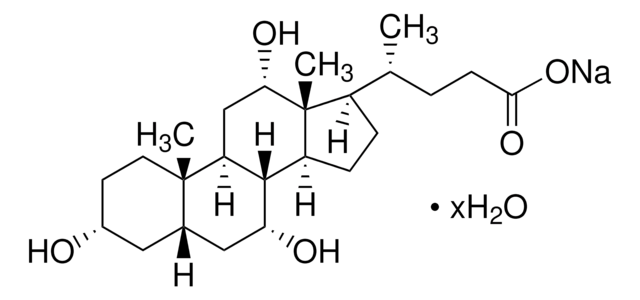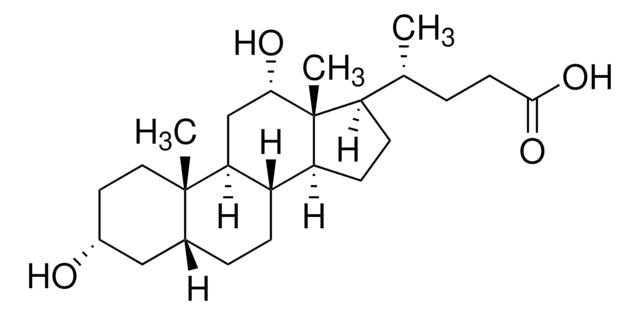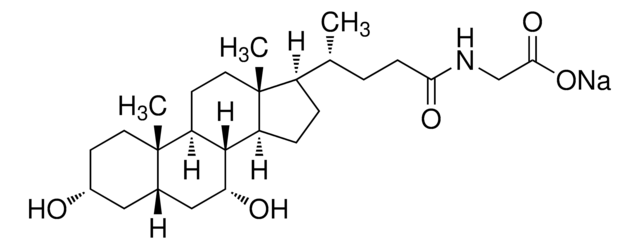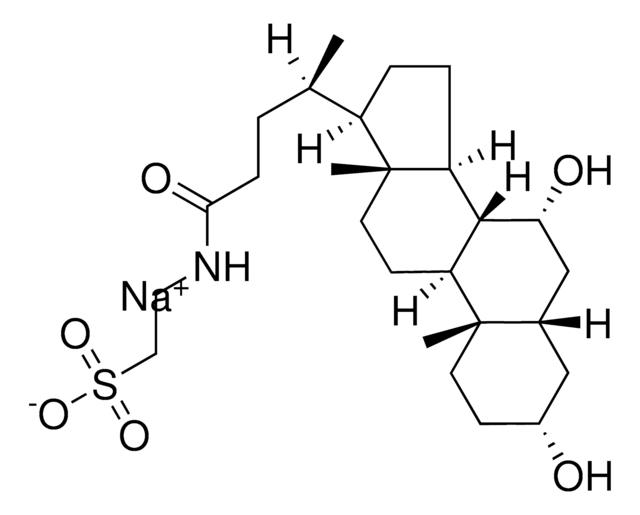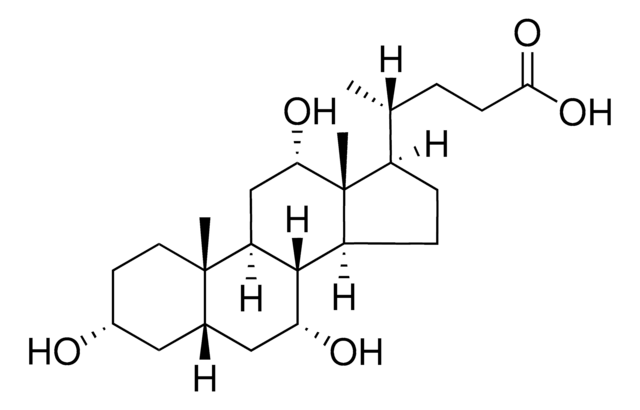C8261
Sodium chenodeoxycholate
≥97%
Synonym(s):
3α,7α-Dihydroxy-5β-cholanic acid, 5β-Cholanic acid-3α,7α-diol, Chenodeoxycholic acid sodium salt, Chenodesoxycholic acid, Chenodiol
About This Item
Recommended Products
description
anionic
Quality Level
Assay
≥97%
form
powder
mol wt
414.55 g/mol
technique(s)
protein purification: suitable
SMILES string
[Na].[H][C@@]12C[C@H](O)CC[C@]1(C)[C@@]3([H])CC[C@]4(C)[C@]([H])(CC[C@@]4([H])[C@]3([H])[C@H](O)C2)[C@H](C)CCC(O)=O
InChI
1S/C24H40O4.Na.H/c1-14(4-7-21(27)28)17-5-6-18-22-19(9-11-24(17,18)3)23(2)10-8-16(25)12-15(23)13-20(22)26;;/h14-20,22,25-26H,4-13H2,1-3H3,(H,27,28);;/t14-,15+,16-,17-,18+,19+,20-,22+,23+,24-;;/m1../s1
InChI key
WANBNZVOEKGHSS-VQNKLXGESA-N
General description
Application
Biochem/physiol Actions
Signal Word
Danger
Hazard Statements
Precautionary Statements
Hazard Classifications
Acute Tox. 3 Oral - Repr. 2
Storage Class Code
6.1C - Combustible acute toxic Cat.3 / toxic compounds or compounds which causing chronic effects
WGK
WGK 3
Choose from one of the most recent versions:
Already Own This Product?
Find documentation for the products that you have recently purchased in the Document Library.
Customers Also Viewed
Articles
Today, diverse studies report the benefits of probiotics, such as inhibitory effects on pathogens, aid in the management or prevention of chronic intestinal inflammatory diseases or atopic syndromes, and support to the immune system. Potential beneficial applications abound, researchers continue to evaluate the effictiveness and clarify the mechanisms of action of probiotics.
Our team of scientists has experience in all areas of research including Life Science, Material Science, Chemical Synthesis, Chromatography, Analytical and many others.
Contact Technical Service


